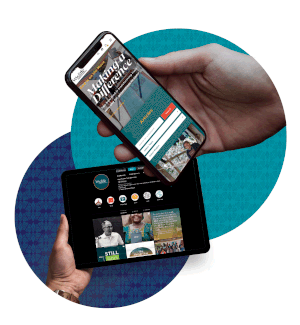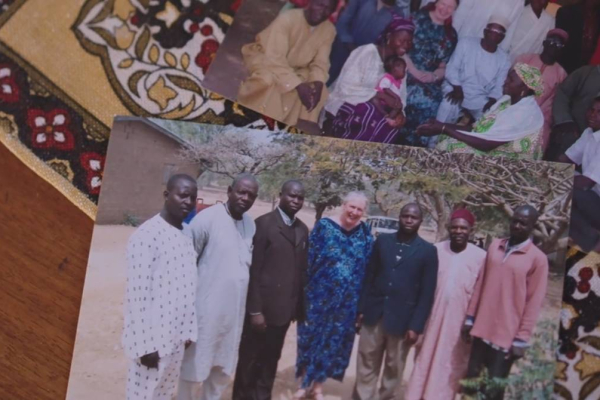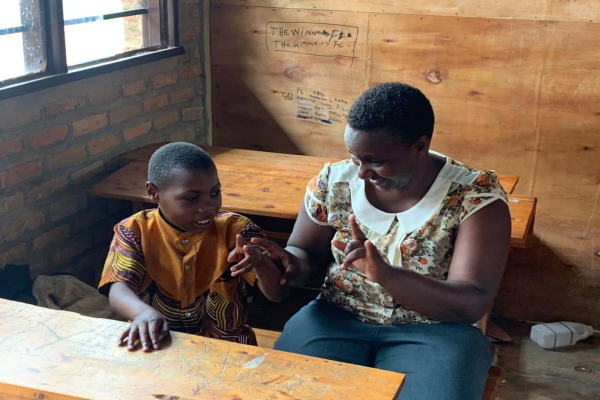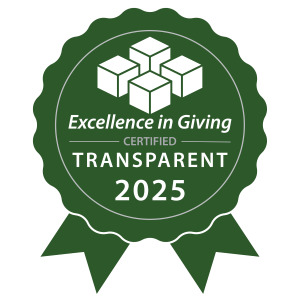Bringing the Gospel to All Nations: Why Cultural Context Matters
How Bible translation is fulfilling the Great Commission.

When Jesus entrusted His followers with the Great Commission, He prompted them to not keep the hope to themselves; they were instructed to share it with others. “Therefore, go and make disciples of all the nations, baptizing them in the name of the Father and the Son and the Holy Spirit. Teach these new disciples to obey all the commands I have given you. And be sure of this: I am with you always, even to the end of the age” (Matthew 28:19-20, NLT).
So what does Jesus mean when He says “all nations”? The answer is quite simple: the whole world! God’s people should be composed of individuals from all languages and people groups. “For this is how God loved the world: He gave His one and only Son, so that everyone who believes in Him will not perish but have eternal life” (John 3:16, NLT).
To make true disciples of all nations, the gospel must be understood deeply, resonating with people’s hearts and minds. This is where contextualization comes into play.

Contextualization: A Biblical Approach
“Contextualization” has a variety of definitions. In a Wycliffe context, we’re referring to the idea of presenting the gospel in a way that resonates with specific cultural and linguistic contexts without changing its core message.
The Bible itself demonstrates the importance of understanding an audience and allowing the message to reach people’s hearts with their cultural contexts. For example, the four Gospels of Matthew, Mark, Luke and John were written by different authors for specific audiences:
- Matthew wrote to Jewish Christians, emphasizing Jesus as the Messiah prophesied in Hebrew Scriptures.
- Mark targeted Roman Gentiles, focusing on Jesus’ actions and servanthood and clarifying Jewish customs unfamiliar to a Roman audience.
- Luke addressed Greek and Hellenistic readers, presenting Jesus as the Son of Man and Savior of all people.
- John wrote for a broad audience of both Jews and Gentiles, highlighting the universal nature of Christ’s mission.
Each author tailored the message to their audience’s cultural context in order for the message of who Jesus is to reach their hearts. Read together, these books of the Bible offer readers greater insight into the heart of God.
The apostle Paul was a master of contextualization. In Athens, he observed the city’s idols and used them as a way to introduce the concept of the one true God to listeners (Acts 17:22-23). Paul’s approach didn’t dilute the gospel, but made it accessible and relevant.
He also quoted Greek poets to connect with his audience’s existing beliefs. Have you ever heard a preacher use cultural references in a sermon in order to better reach the audience? How did it help you understand biblical principles and lessons?
The Power of Language in Contextualization
Language is a key component of contextualization. It carries cultural nuances, idioms and expressions that can either clarify or obscure meaning. Translating the Bible into someone’s language ensures they can fully grasp its teachings.
Think about the way that the Bible uses idioms and analogies. For example, the Bible uses the phrase “bear fruit” (Colossians 1:6) to help readers understand how the Holy Spirit transforms people’s hearts and lives.
But in another culture, this phrase might be confusing if it is translated literally without taking into account cultural nuances.
Similarly, as a Christian you probably have heard the phrase “accept Jesus into your heart” in church. That’s because in our cultural context in the U.S., we talk about the heart as the place where we feel love or emotion. In a lot of ways, we think of the heart as the center of our feelings and being. But did you know that the Awa people of Papua New Guinea think of the liver as their center? Or that the Rawa people, also from Papua New Guinea, think of the stomach as their center?
Effective Bible translation considers word choice nuances in order to convey the intended meaning accurately.
The importance of word choice in Bible translation was very apparent to Bible translators working with the of Tzeltal people in Mexico. They have 26 different ways to say “to carry.” For instance, q’uech means “to carry on” your shoulder while pinch’ means “to carry by scruff of neck.”
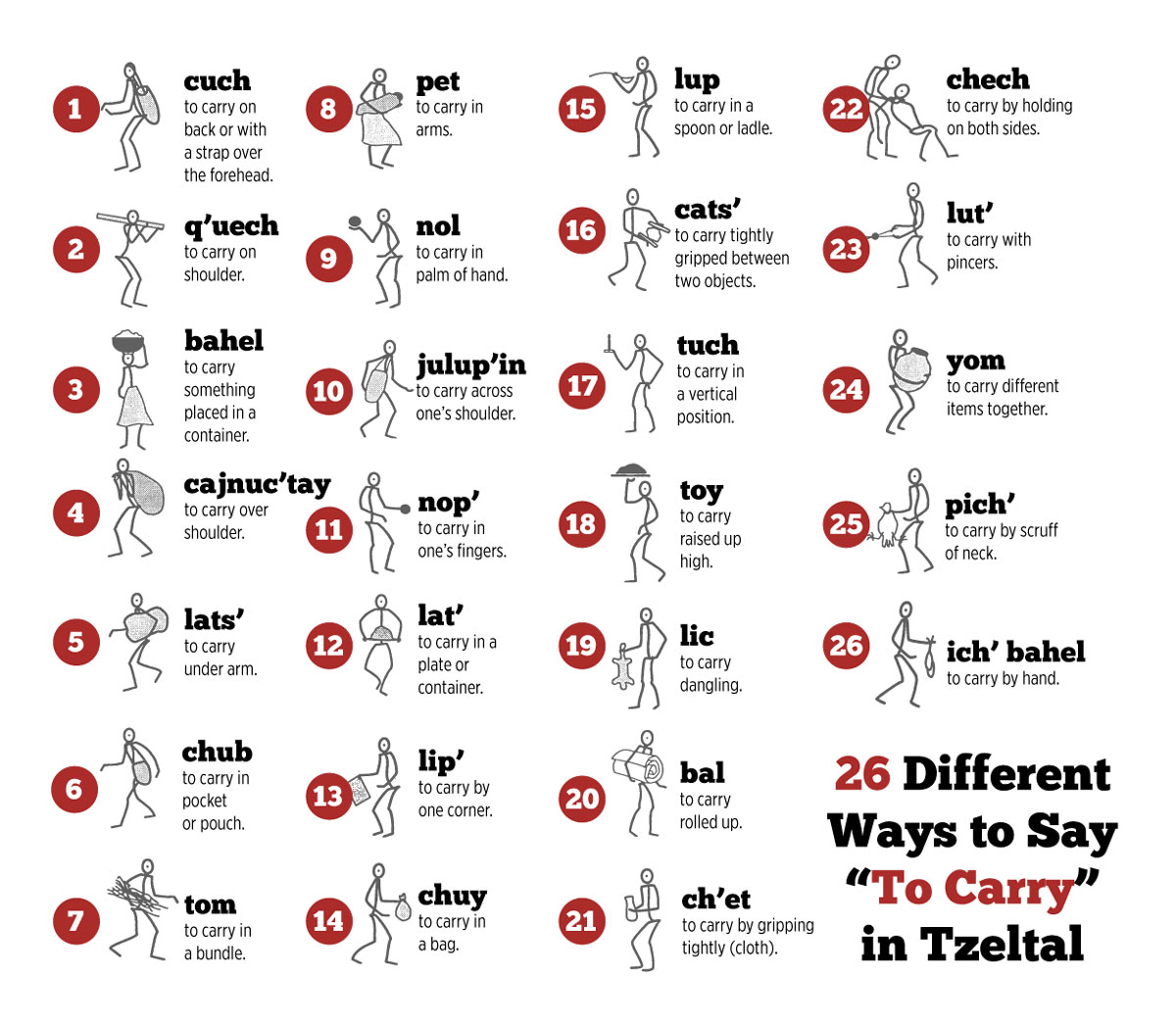
So when translating Matthew 3:11b and Luke 14:27, they had to prayerfully take into account the culture’s various words in order to develop the most accurate translation according to meaning and connotations.
Bible Translation Today: Continuing the Tradition
Modern Bible translation efforts continue this biblical tradition of contextualization. Translators work diligently to ensure that Scripture resonates powerfully with the audience’s cultural or geographical context.
Think about what it would be like to grow up in a part of the world that is an arid desert. You’ve spent your entire life experiencing little to no rain. Now imagine you’re reading Isaiah 1:18b in your language: “… ‘Though your sins are like scarlet, I will make them as white as snow.’ …” (NLT).
You’d likely be confused by the word “snow” in that verse if you grew up with no context for that type of weather. Similarly, in some cultures, sheep and shepherds are unfamiliar concepts. In these cases, translators might use locally understood analogies to convey the same truths. The goal is always clarity and faithfulness to the original message within someone’s context.
Visual Translations for Deaf Communities
Context is also important when it comes to the format that Scripture is in. While you might assume everyone connects deeply with Scripture in a written format, that’s not necessarily true. In fact, around the world today, many Deaf people struggle to understand the gospel because it’s only in a written format. Sign language is a visual language, different from any spoken language. A visual Bible looks different from printed Scripture. Typically, a sign language Bible video is developed by recording a Deaf translator’s face, hands, body movements and expressions — all part of natural sign language. This then brings the gospel to life!
God desires to communicate His love for His people in the language that best captures their hearts, and for Deaf communities around the world, that requires Scripture that is presented naturally, clearly and visually.
In Honduras, for example, there are up to 70,000 Deaf who use Honduran Sign Language to communicate. In 2022, a qualified team of Deaf Hondurans started translating Scripture into Honduran Sign Language. They began with Genesis 1-8 and Luke 1-3. This complex project is helping Deaf individuals grasp the truth of God’s Word in a way that touches their hearts.
By ensuring that a Bible translation considers their specific sign language and cultural context, the Honduran Sign Language community is better equipped to receive and share the gospel. God is already using sign language Scripture to transform the lives of Deaf Hondurans.

Valuing Cultural Diversity in Evangelism
When we recognize and respect different cultures, we reflect Christ’s love more authentically. The early Church set this example. Paul, in his missionary journeys, adapted his approach to connect with various cultures without compromising the gospel’s truth.
In 1 Corinthians 9:22b, Paul said, “Yes, I try to find common ground with everyone, doing everything I can to save some” (NLT). This approach acknowledges that while the message remains the same, the method of delivery can vary to effectively reach different audiences.
As globalization continues to bring cultures closer together, the global Church has a unique opportunity to model unity in diversity. The gospel transcends cultural and linguistic barriers, while honoring the uniqueness of each culture it touches.
This unity is key to fulfilling the Great Commission.
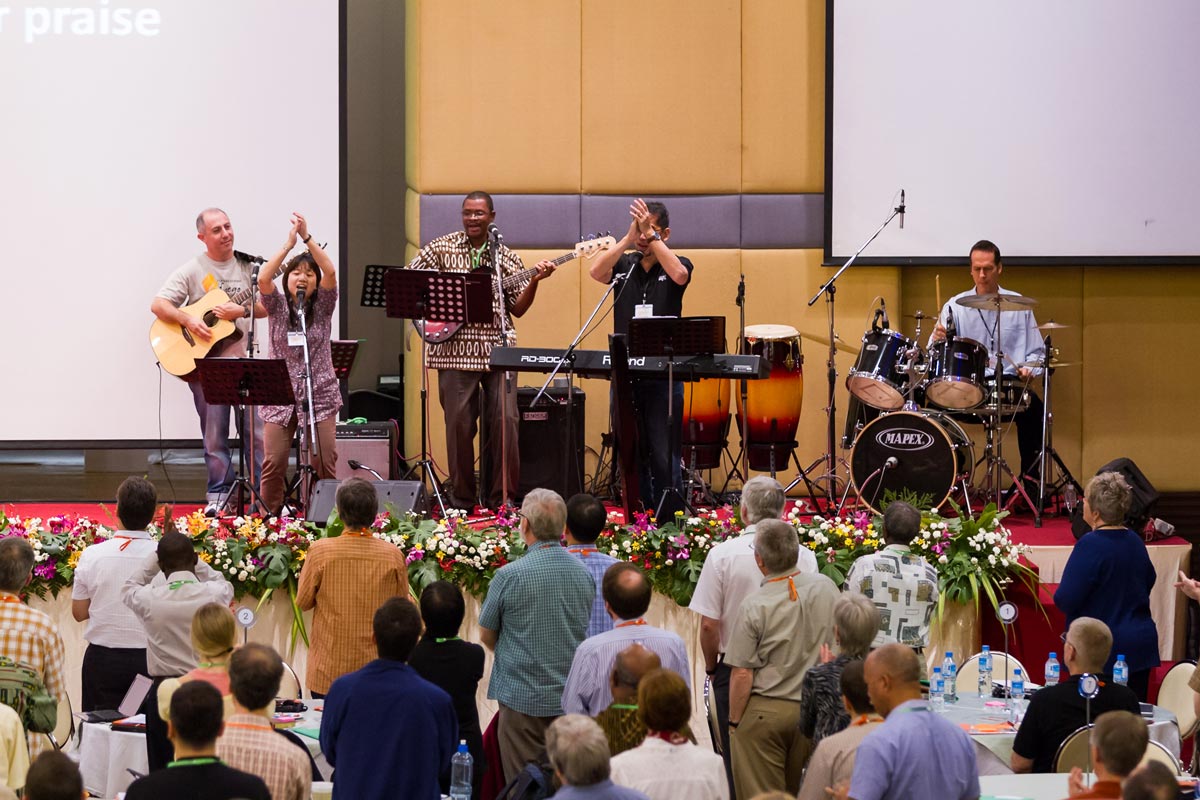
Challenges and Considerations
Contextualizing the gospel through Bible translation presents several challenges that require sensitivity, cultural awareness and adherence to biblical truth. Translators and missionaries must carefully navigate:
- Avoiding Syncretism: While contextualization seeks to make the gospel culturally relevant, it’s vital to guard against blending biblical truths with local beliefs in ways that distort the message. As Galatians 1:8 warns, “Let God’s curse fall on anyone … who preaches a different kind of Good News than the one we preached to you” (NLT). Maintaining the truth of God’s Word is essential.
- Preserving Biblical Integrity: Adapting Scripture to different cultures should never compromise its core doctrines. Translators strive to ensure that key truths — like salvation through Christ alone — are communicated accurately, no matter the cultural context. As John 14:6 reminds us: “I am the way, the truth and the life. No one can come to the Father except through me” (NLT).
- Engaging Local Communities: Translators work closely with people in the local community to produce translations that resonate deeply with those who will receive it. Often, Bible translations go through a phase called “community testing,” where translated passages of Scripture are presented to the local community for their feedback to assure a text’s naturalness and clarity. This collaboration ensures the translation is both linguistically accurate and culturally relevant.

The Impact of Contextualized Scripture
When people receive the Bible in a language and format that touches their heart and resonates with their cultural context, the transformative power of God’s Word is magnified. It helps provide:
- Deeper Understanding: When complex theological concepts are translated into culturally familiar ways, they become more accessible. As Paul teaches in 1 Corinthians 14:9, “If you speak to people in words they don’t understand, how will they know what you are saying?” (NLT) Contextualized Scripture breaks down these barriers, making the hope found in Jesus clearer.
- Personal Connection: When the Bible directly impacts people’s hearts, they feel a personal connection with God. Psalm 119:105 says, “Your word is a lamp to guide my feet and a light for my path” (NLT), reminding us of the Bible’s power to guide and comfort when it is fully understood.
- Cultural Relevance: Contextualized Scripture addresses local issues, questions and challenges, showing how God’s Word applies to everyday life. Following Christ challenges us to engage with cultures in mindful ways. The Bible is full of wisdom and truth that transcends cultural differences.
Your Role in Contextualization
As part of the global Church, every believer has a role in ensuring people worldwide can access Scripture in their language, but God is the one who works through us. As you contribute to this global movement, you can trust that God will empower you.
We can pray for Bible translators, missionaries and the communities receiving God’s Word, asking for wisdom, perseverance and protection, as 1 Thessalonians 5:17 says: “Never stop praying” (NLT).
We can give financially to support translation projects and collaboration. Our generosity, guided by God, helps bring the Bible to those still waiting. Proverbs 3:9 a encourages us to “honor the Lord with [our] wealth …” (NLT).
We can engage with our church communities. As members of the body of Christ, wherever God has planted us, we are equipped to use our unique skills and resources for His Kingdom: "God works in different ways, but it is the same God who does the work in all of us” (1 Corinthians 12:6, NLT).
We can advocate for Bible translation by raising awareness in your church and community, knowing that God uses your efforts to spread His Word. As Romans 10:15 reminds us, “… How beautiful are the feet of messengers who bring good news!” (NLT)
Living Out the Heart of the Gospel
Bible translation is at the heart of fulfilling the Great Commission. By ensuring that Scripture is clear, relevant and accessible to every nation and culture, we help make disciples of all nations. This aligns with the apostles’ model of sharing the gospel across linguistic and cultural boundaries while staying true to the message of salvation.
Our mission also reflects the promised future described in Revelation 7:9a: “I saw a vast crowd, too great to count, from every nation and tribe and people and language, standing in front of the throne and before the Lamb” (NLT). This vision reminds us that God’s Kingdom will include people from every culture and language. By supporting Bible translation efforts around the world, we actively participate in making this vision a reality, helping people everywhere experience the hope of the gospel.
As Jesus assured in Matthew 28:20, “I am with you always, even to the end of the age” (NLT). This promise gives you the strength to live out the Great Commission — whether through prayer, financial support, advocacy, engaging your church or joining the team — knowing that God is working through all of us.
Read more about how Bible translation is fulfilling the Great Commission in “Pentecost and the Gospel’s Power to Transcend Language and Culture” and “Making Disciples as the Global Church”.
Let’s be people who pray without ceasing. Continue to support missions around the world by lifting Bible translation up in prayer daily.
Sign Up for Weekly “God Sightings” Text Messages
Each week, you can receive an update on what God is doing around the world — directly to your phone! Stay informed, inspired and encouraged by the latest news, and join us in praying for God’s name to be made known among the nations through the work of Bible translation.
Text SIGHTINGS to 407-358-0916.

